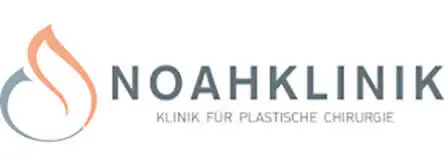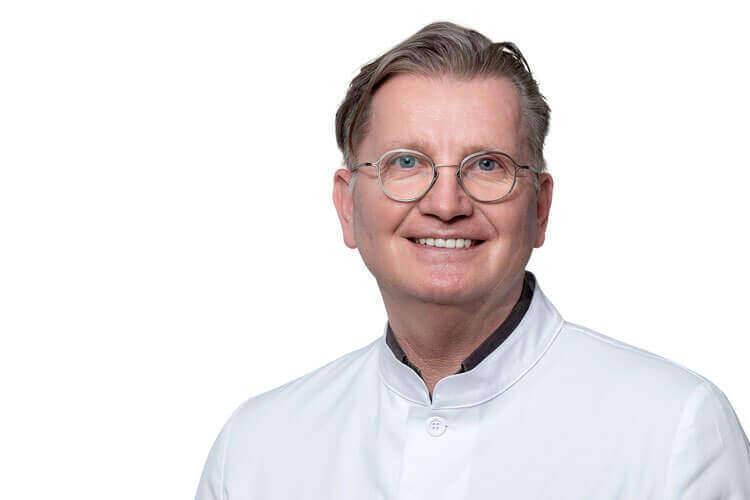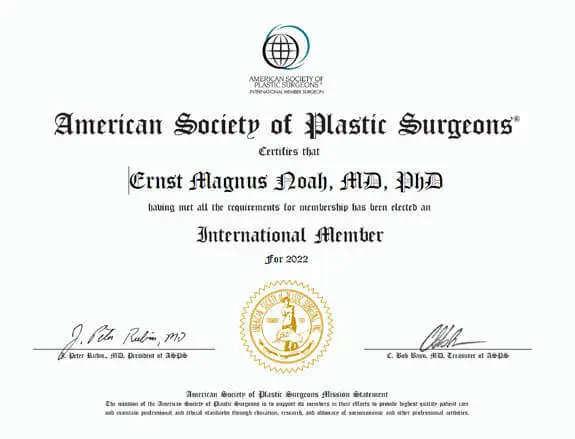Upper eyelid lift in Kassel / Lifting of the upper eyelids
Find out more about the upper eyelid lift to tighten your upper eyelids
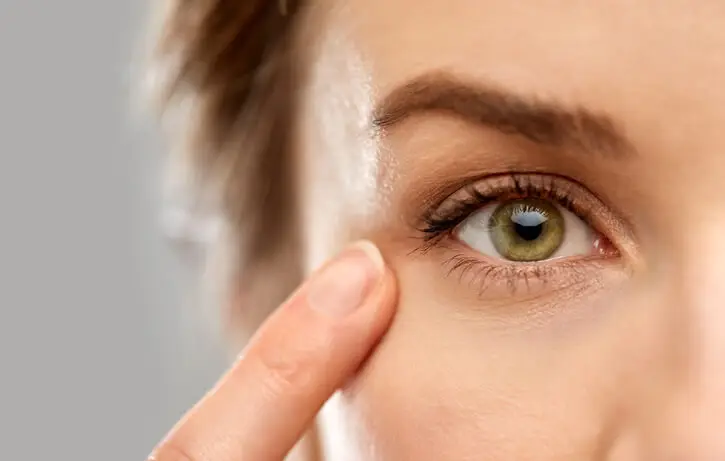
In the course of life, changes in the elasticity of the skin of the upper eyelids lead to sagging and drooping. A drooping upper eyelid is often referred to as a drooping eyelid. This is a normal consequence of ageing. However, it can also lead to a complete change in a person's appearance.
A surgical upper eyelid lift will correct this and tighten your upper eyelid.
Brief information on upper eyelid lifting
| Treatment: | outpatient |
| Hospitalisation | Possible on request |
| OP duration | 1-1.5 hours |
| Incapacity to work | 10-14 days |
| Swellings | 7-10 days |
| Pain | No or little pain |
| Risks | Post-bleeding, dry eyes, overcorrection |
Often combined with:
What is an upper eyelid lift and when is it useful?
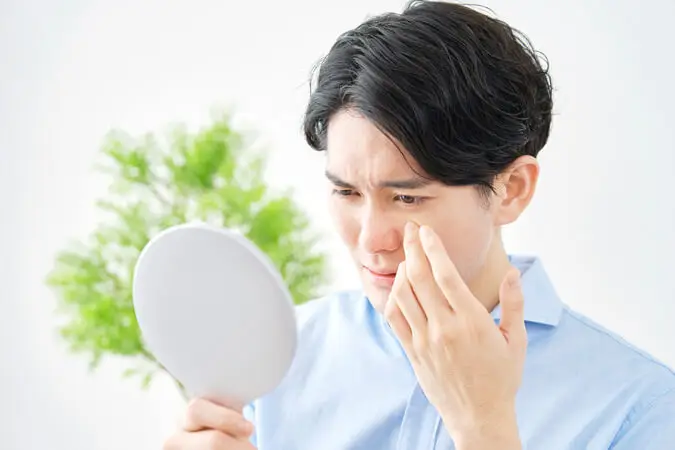
An upper eyelid lift is a cosmetic operation. It usually involves removing excess skin from the upper eyelids. In many cases, the aim of the operation is to achieve a younger and fresher appearance.
The ageing process reduces the skin's elasticity and resilience. Every blink pulls on the skin, so the skin can simply become too much. Sometimes there are familial clusters.
The eyelids appear heavy and sometimes even lie wide on the eyelashes. The result is a sad look or a tired appearance. The field of vision can also be restricted.
An upper eyelid lift can be an effective treatment to improve the appearance of your eyelids.
Reasons for an upper eyelid lift
There are aesthetic or functional reasons why an upper eyelid lift may be of interest:
- Age-related or congenital Weakening of the connective tissue on the upper eyelid
- Formation of Drooping eyelids
- Feeling of heaviness in the upper eyelids
- Increased tiredness and lack of concentration
- Visual impairments
- Restriction of the field of vision, especially when looking to the sides
- etc.

Preparation for the operation
Before deciding in favour of surgical correction of your upper eyelids, the following points are important:
Preliminary examination
The patient's state of health is checked by means of a detailed preliminary examination. Possible risks and complications can be ruled out before the operation. Only then will you receive your personalised treatment recommendation.
A detailed medical history will first be taken and the following information obtained from you:
- Pre-existing conditions
- Allergies
- Taking medication
- the current state of health
- Lifestyle of the patient
We carry out a physical examination to determine the condition of your eyes, eyelids and entire face. We also take into account the condition of your skin and any existing wrinkles in the treatment area. Very important for your treatment recommendation: The position of the eyebrow and the activity of the eyelid elevator muscle.
A detailed consultation will take place as part of your preliminary examination. Here you will learn everything about possible treatment results, potential risks and complications, costs, the duration of the procedure and the healing process.
The preliminary examination plays an important role in your upper eyelid lift. It forms the basis for an optimal result. It is therefore essential that you take sufficient time for these examinations and seek advice from an experienced and qualified doctor.
If you regularly take medication, we will clarify during the preliminary examination whether and how an upper eyelid lift is possible for you. There are medications that can have an effect on the procedure (e.g. blood-thinning medication). These must therefore be taken into account when planning and performing the operation, as otherwise unnecessary risks and complications may arise. If the risk to you is too high, the operation may not be performed for safety reasons.
As part of your preliminary examination, you will be informed of all individual points (e.g. smoking, medication, etc.) that are beneficial and should be taken into account.
Carrying out the operation
As every person is individual, every operation is unique. We would like to provide you with the following general information about the operation:
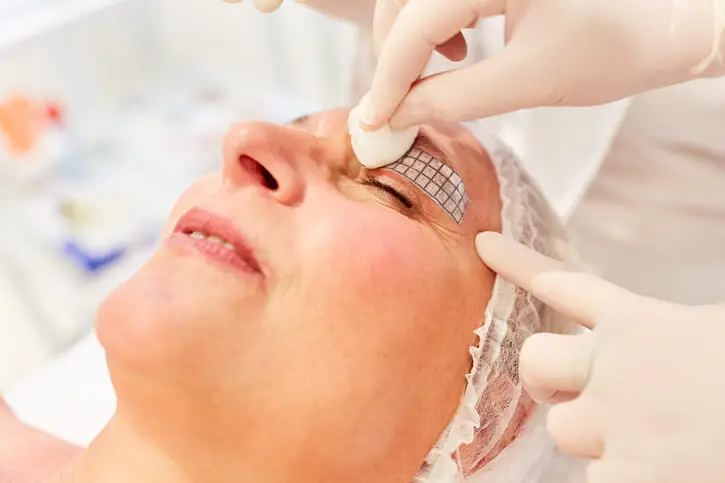
Which anaesthesia is used? The anaesthesia
Different types of anaesthesia can be used for an upper eyelid lift:
- Local anaesthesia
The anaesthetic is injected directly into the skin and the nerves are anaesthetised. The patient is awake and responsive during the procedure - Twilight anaesthesia
This puts you into a sleep-like state. In fact, this is rarely necessary. - General anaesthesia
is almost never necessary for an upper eyelid lift - but is generally possible.
Are there different cutting patterns?
There are different techniques for an upper eyelid lift, which are used depending on the initial findings and the desired change:
- Classic upper eyelid lift
- Tightening with brow lift or forehead lift or temple lift
Your individual factors and your desire for change determine the necessary scope of treatment and the method. Basically, it must be clarified whether a pure removal of skin and fatty tissue or the removal of excess skin must be carried out so that your target result can be achieved
Aftercare and healing
Before deciding in favour of surgical correction of your upper eyelids, the following points are important:
Will I have pain and swelling after the upper eyelid lift?
If pain occurs after an upper eyelid lift, this can be treated by prescribing painkillers.
Swelling and bruising can occur after upper eyelid lift surgery. They usually subside on their own 10 to 14 days after the operation.
Elevating and regularly cooling the area can improve swelling. Also make sure you eat a healthy diet
and sufficient sleep.
How does scarring progress? Scar care
Keep the wound clean and dry in the days and weeks following the upper eyelid lift to prevent infection. Discuss the use of creams and cosmetics with us - as well as the wearing of contact lenses.
Rules of behaviour
The right behaviour after the operation can support a quick and uncomplicated recovery. We will provide you with all individual measures. The following is general advice:
Cool your eye area
Targeted cooling several times a day in the initial period after the operation can reduce swelling or bruising. There are a few tricks that we would be happy to share with you.
Reduce visual strain on your eyes after the operation. Avoid reading or working at the computer for long periods.
Avoid strenuous activities (e.g. sport, swimming, saunas, lifting heavy objects, etc.) in the first few weeks after the operation.
Avoid direct sunlight and strong winds in the first few weeks after the operation. If exposure to sunlight cannot be avoided, wear sunglasses.
Follow your doctor's instructions and guidance. By following these rules of behaviour, you can ensure that you heal quickly and safely and achieve the best possible result.
Risks and possible complications
Risks and possible complications are possible with every surgical procedure. Our detailed preliminary examinations, our extensive experience and our high standard of hygiene in the operating theatre reduce the risk - but we cannot rule them out. Below you will find general risks - in your consultation you will learn about all the risks that apply to you individually:
- In rare cases, bleeding may occur during or after the procedure. In the event of severe post-operative haemorrhage, a repeat procedure may be necessary so that the wound can be closed again.
- Even if we treat in a high-quality, sterile operating theatre, an infection can still occur. It can usually be treated with antibiotics.
- Most scars after an upper eyelid lift are small and inconspicuous - however, a disruption in the healing process can also occur, making the scar thicker or wider than desired.
- If your practitioner injures certain nerves during the procedure, temporary or permanent skin sensitivity may occur.
- If your practitioner injures certain nerves during the procedure, temporary or permanent skin sensitivity may occur.
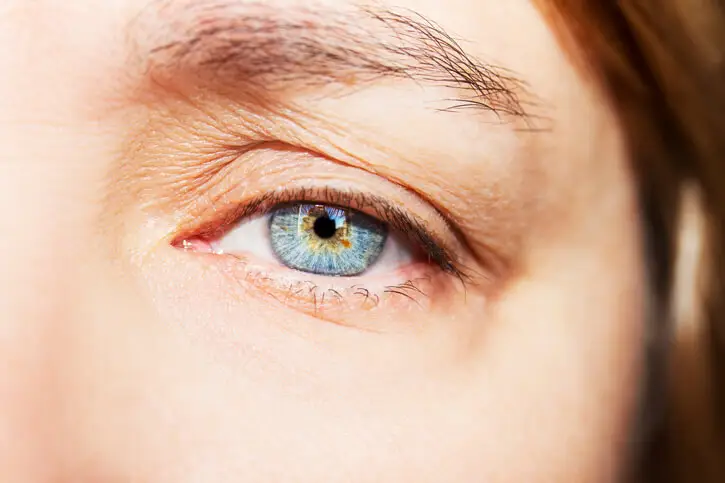
Complications occur only rarely, but in this case, the health insurance companies can help you with the follow-up costs (§52 Social Code). Therefore, it is worthwhile to take out a follow-up costs insurance. You can get more information in our consultation hours.
Costs and financing
The costs vary depending on the degree of difficulty and extent of the procedure. Cost factors include surgical fees, anaesthesia, aftercare and the cost of medication.
If it is not possible to pay the surgery costs all at once, we can also offer you financing if you have sufficient creditworthiness.
How do I find the right doctor?
The choice of doctor is a very important decision, as the skill and experience of the practitioner will influence your final result. Here are some tips to help you:
- Pay attention to the specialist title - terms such as cosmetic surgeon, beautydoc, etc. are unprotected. A protected specialist title is specialist in plastic and aesthetic surgery. The additional titles "plastic surgery" are also protected.
- Make sure you receive detailed advice - only make a decision once you have clarified all the points for yourself.
- Be careful with special offers or economy prices - the costs depend on the amount of treatment and this does not change because it is month a or b.
- Also check the memberships with the professional associations
- Waiting times for appointments are a sign of quality - take this into account when planning ahead. This means that "last-minute offers" can hardly be realistic.
- When choosing a doctor, also consider the aftercare following an operation (e.g. removing stitches)
- Be careful with recommendations from reviews or forums - many reviews are not verified.
- Always take a look at the imprint of the respective page
What experience do we have?
- Prof. Noah is ex-president of the Association of German Aesthetic Plastic Surgeons (VDÄPC)
- German Member of Parliament of ISAPS
- Above-average experience and high patient satisfaction in the field of eyelid correction
- Included several times in the Focus list of medical experts
- 25 years of experience as a plastic aesthetic surgeon
- 100+ eyelid corrections per year
We look forward to meeting you and advising you on your eyelid surgery!
Our awards
Testimonials from patients
Your experienced specialist for plastic and aesthetic surgery
Prof. Dr. med. Ernst Magnus Noah is a specialist in plastic and aesthetic surgery in Kassel.
Before setting up his own clinic, Prof. Dr. Noah was the head physician of a hospital department for plastic, reconstructive and aesthetic surgery for 18 years. His extensive experience makes him a specialist for your eyelid lift.
Prof. Noah also leads Corrections if you want to improve the results of a previous operation.
Conclusion and recommendations
Conclusion:
An upper eyelid lift can be a solution for correcting drooping eyelids if it is performed by an experienced and qualified plastic surgeon. It is important that you as a patient have realistic expectations. You also need to be informed about the risks and complications before deciding to have the operation. A good surgeon will offer and insist on personalised advice and information.
Recommendations:
If you decide to have an upper eyelid lift, you should pay attention to the experience and qualifications of your specialist. A thorough preliminary examination and consultation are essential.
Questions and answers
From a medical point of view, there is no difference whether an upper eyelid lift is performed in summer or winter. There are days with high UV exposure all year round.
One argument in favour of summer is that there is greater planning security, as the risk of infection or catching a cold is lower than in winter.
An upper eyelid lift does not stop the skin from ageing - however, it can visually turn back the clock by many years. The durability of the result depends on your individual factors.
After an upper eyelid correction, this usually takes place on the fifth or sixth day after the operation. The plasters and fine stitches are removed.
The healing process usually takes about 1 to 2 weeks. In individual cases it may take a little longer.
